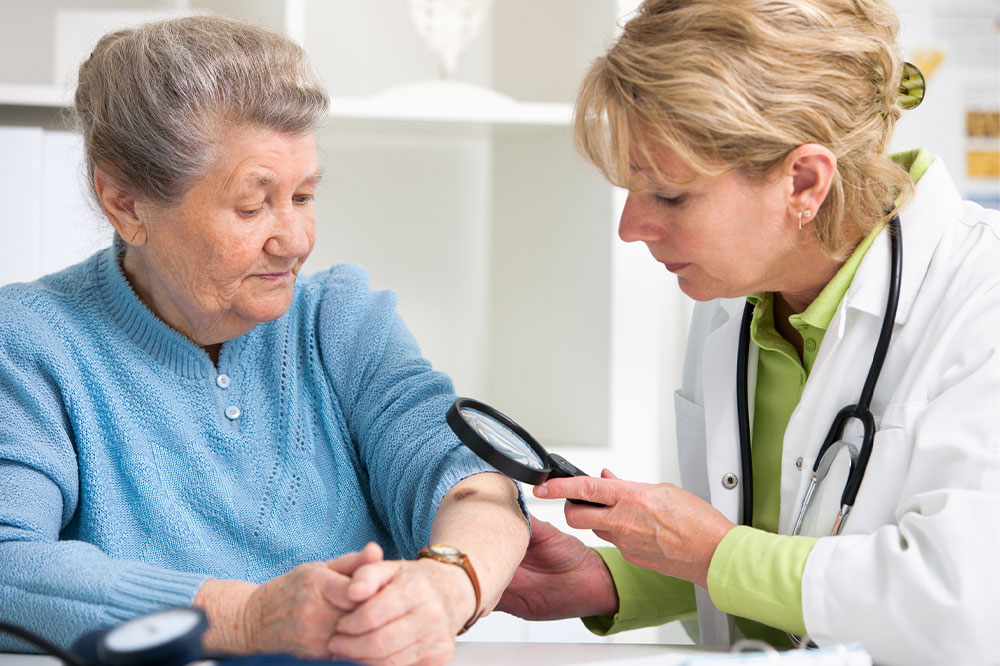
Skin cancer – Signs, causes, and remedies
Adopting a healthy lifestyle is very important if you want to lower the chance of developing cancer of the skin. Skin cancer, a common type of cancer, frequently has links to preventable causes. This cancer risk can be decreased by implementing healthy lifestyle modifications. Your ability to support the health of your skin depends on carrying out good practices. This article features some notable points about this cancer, including its causes, symptoms, and remedies.
Symptoms of skin cancer
Cancer of the skin can be detected if you pay attention to any unusual changes in your body. The following are the symptoms of skin cancer:
- A new or odd spot or mark on your skin that doesn’t go away
- A spot that oozes, bleeds, gets scaly or crusty, or doesn’t heal
- A lesion that bleeds on its own without being picked at
- A mole with redness or swelling outside its borders
- A mole that doesn’t have clear edges
- A mole that changes size, shape, or color
- A hard spot that doubles in size in a few weeks
- Persistent itching or pain in one area of the skin
Causes of skin cancer
To avoid the risk of developing this cancer, you must be aware of some of the risks of this cancer. Some of the most common causes of skin cancer include:
- Sun exposure
The sun’s ultraviolet (UV) rays are the primary cause of skin cancer. About 80% of sun radiation happens before a person is 18 years old. Exposure to the sun, when you are experiencing a sunburn or blistering, can increase the risk of this cancer. - Tanning beds
No matter the form or source, UV rays can hurt your skin. Exposure to UV rays can occur artificially due to tanning beds, booths, and sunlamps. They aren’t any safer than lying out in the sun. - Genetic changes
Mutations in your genes can be passed down or picked up during your life. The BRAF oncogene is the most common inherited genetic change that can lead to melanoma.
Remedies to cure skin cancer
Your skin cancer remedies for treating actinic keratoses and skin lesions that are precancerous but not yet cancerous will differ. Beyond a preliminary skin biopsy, small skin malignancies on the skin’s surface may not require therapy. It completely eradicates the growth. Other choices include:
- Freezing
Actinic keratoses and some minor, early skin malignancies may be removed. Cryosurgery or freezing them with liquid nitrogen may be recommended. When it melts, the dead tissue tends to come out. - Amputation surgery
Cancer may benefit from this kind of treatment. Your doctor excises the malignant tissue along with a border of good skin around it. Extra normal skin surrounding the tumor may be removed with a broad excision. - Chemotherapy
C hemotherapy can kill cancer cells. Anti-cancer creams or lotions are used for malignancies on the top layer of the skin. Skin malignancies that have spread to other body parts are treated with systemic chemotherapy.
A healthy lifestyle is essential too for reducing the risk of skin cancer. Routine skin inspections help with early discovery, increasing the likelihood of success. Cultivating your skin in a sun-safe and beautiful environment can lead to a future without such cancer.




